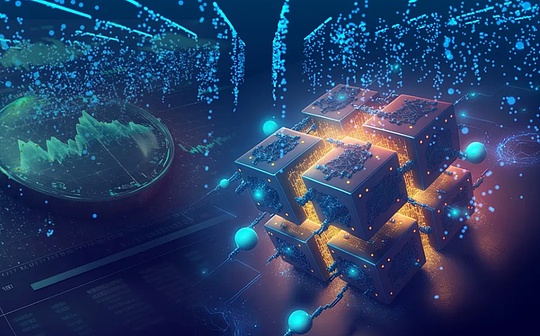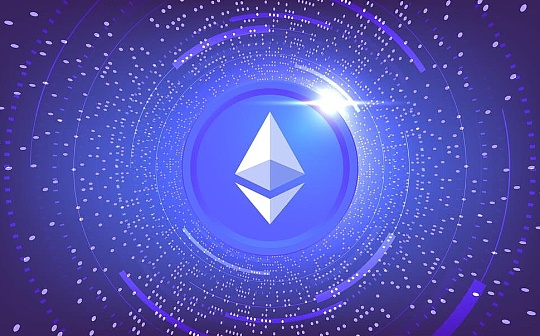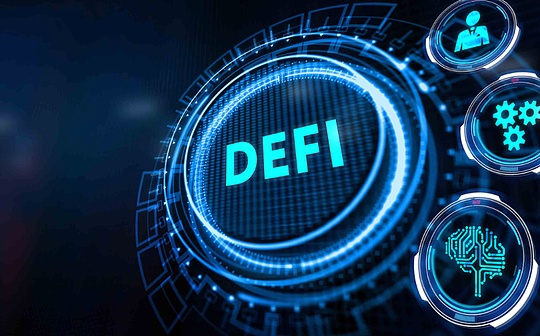
Author: George Kaloudis, coindesk analyst Source: coindesk Translation: Shan Oppa, Bitchain Vision
Key points:
-
Arbitrage opportunities exist in both traditional finance and cryptocurrency fields, but in the cryptocurrency field, arbitrage opportunities are more obvious due to unconfirmed transaction visibility and slow settlement time.
-
Although not as prominent as Ethereum, MEVs on Bitcoin are also emerging through behaviors such as “snatching” the article (Ordinal Inscription), block-losing and miner cartels.
-
The emergence of MEV on Bitcoin may force the market to demand “privatisation” of memory pools, which will undermine one of the cryptocurrencies’ Creation principles.
People think that a “killer application” of cryptocurrencies and blockchain is the ability to trade various assets (if you can call it an asset) without the need for centralized financial intermediaries.And whether most of these assets are useless or just doing something by doing nothing.People get huge returns by trading them.For example,SHIB in 2020 made everyone rich, and then the same trick happened again in 2023 WIF and PEPE deals.
When early funds poured into these tokens, they were first purchased on decentralized exchanges’ automated market makers (AMMs), well before they were listed on centralized cryptocurrency exchanges.AMM is a decentralized application that matches cryptocurrency token buyers and sellers without the need for tedious data sharing programs (such as those required by regulated exchanges).There are no passport photos, driver’s license snapshots, triple selfies, and there is no need to wait for anyone or anything specific.You just connect your crypto wallet, tell AMM you want to buy a certain amount of some kind of asset, click Buy, and you’re ready to go.
In addition to avoiding the convenience and privacy of authentication, these AMMs have an immediate striking point: Although crypto opinion leaders touted cryptocurrency and blockchain as the “next iterative version” of the stock market (imagineA stock market that will never close… If you make a mistake, there is no recourse… This is not good unless you make a profit from some kind of trading error or failure, such as Berkshire Hathaway (Berkshire Hathaway) stock price seems to be trading around $180, not around $600,000 when you happen to be on the right side of the deal).
To some extent, the stock market is closer to real-time than AMM.
A rough example: Party A wants to buy stock XYZ for $100, and Party B sells stock XYZ for $99.Because today’s financial markets are so highly interconnected, Party C knows this in some way (the way of obtaining and utilizing such information is both legal and illegal) and buys the stock XYZ from Party B for $99, and thenSell it to Party A for US$100 immediately.Everyone was satisfied: Party A obtained the stock XYZ, Party B received $99, and Party C earned $1 through arbitrage transactions.
This money-making transaction is now over and the dust has settled. As arbitrage party C takes the profit, the stock XYZ is inefficient in the market ($1 between the buy price of Party A and the sell price of Party BThe difference) also disappeared.All this happens in real time, we mean that it happens linearly, and Party C must execute the transaction between Party A and Party B at the appropriate point in time and must occur in this order (A to C to B).
Of course, we can also see similar arbitrage behavior in AMM, albeit in slightly different forms.Suppose you’ve heard of SHIB early on and want to buy some before it appears on a centralized exchange.Since it is not listed on the exchange, you call an Ethereum-based AMM (SHIB is created on top of Ethereum as an ERC-20 token) and click the button to buy the SHIB token.When you send this order, it gets thrown into a large batch containing many proposed Ethereum transactions.Some of these transactions may be people buying things online using USDC, but many are token transactions like SHIB, WIF, or PEPE.
All of these transactions are visible to everyone until they are finalized and executed, as they are hung in a digital waiting room called mempool.If the AMM you use to trade misvalue the price of SHIB due to inefficiency in the market (as we did in the stock XYZ example), someone on the network can build an Ethereum transaction using a different AMM before youBuy SHIB and sell it to you at a higher price (because remember, these transactions are visible before final confirmation).
To expand on this example further, let’s assume that the amount of SHIB you purchased is quite large.In this case, everyone can see that your large, market-affecting transaction is waiting for confirmation and can trade around your transaction to take advantage of market inefficiency and your order affects the nature of the market.
Such transactions can be classified as sandwich transactions.Some people choose to use the “sandwich attack”“This term, because AMM cannot match buyers with the expected sellers, and this can cause the original buyers to suffer huge losses before the transaction is completed (imagine if you want to buy 1 billion SHIB tokens, and becauseAMM is inefficient and unable to trade sandwiches, you can only get 800 million).
Mezzanine transactions and other types of “inefficiency discovery” are more widely called the largest (or miner) extractable value.(Miners no longer exist in Ethereum, so they are renamed).This is what cryptotechnical terminologists mean when using the acronym MEV in conversations, as if it were a common term (EV or IRR for Advanced Finance).MEV means that in encryption, the person who verifies the transaction chooses to sort the transaction in a way that is most beneficial to himself rather than the trader.Because the block time (the time required to verify the transaction) is notreal time(In Ethereum, transactions are verified every 12 seconds or so), so there is enough real-world time to do arbitrage trading.Especially if you are a robot and not a real person.
With this in mind,It is not difficult to imagine that MEV has expanded beyond AMM.A reasonable conclusion to the previous technical terminology is: the more complex the things you try to do, the more likely it is that the MEV will happen (as in ordinary finance).
MEV: Pros and cons and its fragility in Bitcoin
The discussion about MEV is very broad.Is it good or bad?Is it illegal?
It depends on who you ask.
On the plus side, MEV is a free market that calculates the actual cost of things on the blockchain by eliminating inefficiencies, and inefficiencies will be exploited until inefficiency approaches zero.On the bad side, MEV makes it possible for uninformed laymen and new users to be completely defeated by experts and advanced users (sound familiar?).
So far, we have only mentioned Ethereum because despite the first-mover advantage of MEV, historically, there is no MEV on Bitcoin.It exists theoretically, but is actually not economically feasible (unless in very special circumstances).
You might be wondering: “No MEV? If Ethereum-based AMMs have MEVs, then will Bitcoin-based AMMs have MEVs, so do they have MEVs?”
You are right, it’s just that there is no Bitcoin-based AMM (size meaningful) yet.This is because Ethereum is more expressive than Bitcoin, which means you can “do more with it”, like creating coins with a dog mascot or other emoticons, trade on AMM and get rich.
And because Bitcoin is not very expressive, there is no booming new token market or AMM on Bitcoin.If there are no new non-bitcoin assets on Bitcoin, how can AMM-related MEV opportunities appear?What the hell will you do?Exchange Bitcoin for other Bitcoins?
Yes.This is where MEVs on Bitcoin begin to show themselves.
MEV on Bitcoin
MEV is far less robust on Bitcoin than on Ethereum, and there are always warnings when experts discuss this topic.
“It’s more like a game you can play than a MEV,” said Colin Harper, director of research and content at Bitcoin mining company Luxor Technology (not related to hotels in Las Vegas).
Three years ago, Bitcoin went through an update called Taproot, which made the network more expressive.This expressiveness also unexpectedly made Bitcoin equivalent to NFT through Casey Rodarmor’s Ordinals protocol possible.This is what I mean by “exchanging Bitcoin for other Bitcoins”: “NFT” can work on Bitcoin because the Ordinal protocol can see which Satoshi (the smallest unit of Bitcoin, one in one hundred million) is engravedThere is arbitrary data, which can be pictures, text, or something.These collections are called inscriptions to avoid being confused with NFTs (separate tokens).If you buy inscriptions instead of buying brand new tokens like you do on Ethereum, then you are just buying some bitcoins that are special only from the perspective of the Ordinals protocol.
This is actually buying Bitcoin with Bitcoin (of course, it is to buy less).Just like buying SHIB with ETH or buying USDC with USDT, buying Bitcoin with Bitcoin is an act of buying first.
“When you sell inscriptions on Magic Eden or other similar markets, you’re using PSBT [partially signed bitcoin transactions],” Harper explained.”Seller signs half of them, and when the buyer buys, they complete the transaction with their signature and the buyer pays for the transaction. So if an NFT trader sees a transaction in the memory pool, they can steal it by broadcasting their own transactions to the point of stealing it., replace the original buyer’s payment and address with their own transaction. To do this, they broadcast a higher-cost RBF [fee replacement] transaction to ensure that their transaction is confirmed before the original transaction.”
While this is not like the pure MEV discussed in the first part of this article, it still looks like a MEV: the expected buyer and seller have no match as the third party stepped in and offered more compensation to the miners in exchange for the inscription, while the miners passedAccepting third-party transactions maximizes your own value in transactions.
Other MEV-like things on Bitcoin
Bitcoin still has miners and in the mining business, some things happen regularly and look like MEV.
A common example is empty block mining.Bitcoin will regularly mine an empty block.This block is useless to anyone except the miner who mines the block, because no other transactions waiting to be confirmed are verified except for rewarding the miner for the coinbase (lowercase “c” in the block, not the company) transaction.There are technical reasons for this situation. The emergence of empty blocks is actually accidental, but it is hard to say that it is a) not MEV and b) is beneficial to Bitcoin (although it is also difficult to say that it is a bad thing).
There is also the cartelization of miners.Many Bitcoin miners now use mining pools to balance their income, mining collectively and gaining corresponding share.This can cause problems, especially as the mining pool grows bigger.As Walt Smith of venture capital firm Cyber Fund wrote in an exhaustive MEV on Bitcoin article:
“… Mining pool mining achieves savvy multi-block MEV by increasing the chances of winning in successive blocks, creating systemic risks. Mining pools and other mining cartels enforce universals by abusing mining pool economicsThe block template blacklists small miners who do non-standard block construction. The ongoing surplus costs combined with economies of scale will trigger integration, resulting in a pathological cycle.”
Currently, some mining pools control a large part of the hash rate of the entire network, and two or three mining pools can join forces to control more than half of the computing power.If this mining pool alliance wins enough blocks in a row, it can use its monopoly power to maximize profits.
Another real example of Bitcoin miner behavior might be MEV: out-of-band payment.In these cases, Bitcoin miners are rewarded for accepting transactions deemed non-standard (whether off-chain or through separate and seemingly unrelated bitcoin transfers).Again, this is not pure MEV, because the value of extraction is not present on the blockchain due to savvy program decisions.Instead, value is extracted by miners getting more rewards than they should have received.
Some researchers worry that out-of-band payments are the first step towards a landslide and may mask incentives.But miners are taking advantage of this opportunity.Listed mining giant Marathon (NASDAQ: MARA) has launched a service called Slipstream that accepts non-standard transactions.
Worryingly, such dark-box operations may lead to the emergence of private memory pools, which is a problem for any blockchain.As CoinDesk’s Sam Kessler wrote: “The most urgent thing is that there are concerns that private memory pools may consolidate new middlemen in key areas of the Ethereum trading pipeline..”
If most transactions are submitted to a private memory pool for confirmation, only a few people (i.e., the few people assigned) can affect Bitcoin transactions.This will centralize the power of blockchain, which is clearly an unpleasant situation for anyone who values censorship resistance.
There are other examples of MEVs on Bitcoin, and there are bound to be more examples.Since it appears in some form, network participants need to be aware of it.






